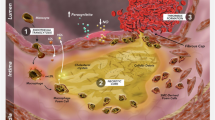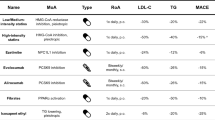Abstract
Radiolabeling of low density lipoprotein (LDL) apoB100 with125I, an oxidative process, is commonly used in lipoprotein investigation. Since 1) LDL is unstable and oxidation-prone, 2) the modification of apoB100 by oxidation increases the negative charge of particles and leads to the uptake of modified LDL through the scavenger receptor pathway, and 3) oxidized LDL is cytotoxic, it is relevant to investigate whether the oxidative stability of LDL is influenced by its labeling with125I. The aim of this study was to investigate and compare lipid and protein oxidation markers in human LDL after labeling with125I by two widely adopted methods that use ICl or the chloramide 1,3,4,6-tetrachloro-3α,6α-diphenylglycoluril as the oxidizing agent. Native LDL served as a common control and sham-iodinated LDL as a handling control for each procedure. The resistance against copper-induced oxidation of125I-LDL labeled with ICl was similar to that of controls with regard to the lag time and maximal amount of conjugated diene formed, as there were levels of initial conjugated diene, α-tocopherol, and tryptophan. However, radioiodination with the chloramide accelerated the onset of the rapid phase of LDL oxidation due to a drastic depletion of α-tocopherol and increased conjugated diene content. Measurements of copper-induced LDL oxidizability showed enhanced indices of lipid oxidation. The lag time and the time to maximal diene production were 65% and 30% shorter than controls. This was accompanied by a 50% reduced tryptophan fluorescence. The anionic surface charge of the LDL particle increased moderately with both labeling procedures. The results indicate that labeling of LDL with125I may oxidize lipids and apoB100 to a variable extent, depending on the nature of the iodinating agent. This is why assessment of the oxidizability properties of125I-labeled LDL is recommended for reliable biological studies.
Resumen
El marcaje de la apoB100 de las lipoproteínas de baja densidad (LDL) con125I es común en la investigación con lipoproteínas. La yodación es un proceso de oxidación. Teniendo en cuenta que 1) las LDL son inestables y se oxidan con facilidad, 2) la oxidación de la apoB100 incrementa la carga negativa de la partícula y provoca su captura por el receptor basurero y 3) las LDL oxidadas son citotóxicas, es relevante investigar si el marcaje con125I de las LDL afecta a su estabilidad oxidativa. El objetivo de este estudio consiste en analizar y comparar indicadores de oxidación de lípidos y proteínas en LDL humanas marcadas con125I por dos métodos ampliamente seguidos que emplean como agente oxidante el ICl o la cloramida 1,3,4,6-tetracloro-3α,6α-difenilglucoluril. Las LDL nativas se utilizaron como control común y las LDL yodadas en falso como control procedimental para cada método. La resistencia a la oxidación inducida por cobre de las125I-LDL marcadas con ICl fue similar a la de las LDL controles referente al tiempo lag, cantidad máxima de dienos formados, así como el contenido inicial de dienos, α-tocoferol y triptófano. Sin embargo, la yodación de las LDL con la cloramida acortó el comienzo de la fase de oxidación rápida por depleción de atocoferol y aumento de dienos conjugados. También mostraron índices de oxidación de lípidos superiores (el tiempo lag y el tiempo requerido para la máxima producción de dienos fueron un 65 y 30% más cortos que en sus controles) y una fluorescencia de triptófano 50% inferior. La carga aniónica de la superficie de las LDL aumentó moderadamente con ambos procedimientos de marcaje. Los resultados indican que el marcaje de las LDL con125I puede oxidar los lípidos y la apoB100 en un grado que depende del agente yodante. Se recomienda, por tanto, valorar los índices de oxidabilidad de las125I-LDL para validar su uso en estudios biológicos.
Similar content being viewed by others
References
Bailey, G. S. (1996): In “The Protein Protocols Handbook”, (Walker, J.M., ed.), Humana Press, New Jersey, pp. 673–674.
Berliner, J., Leitinger, N., Watson, A., Huber, J., Fogelman, A. and Navab, M. (1997):Tromb. Haemost.,78, 195–199.
Bielicki, J. K., Forte, T. M. and McCall, M. R. (1996):J. Lipid Res.,37, 1012–1021.
Brown, M. S. and Goldstein, J. L. (1983):Ann. Rev. Biochem.,52, 223–261.
Chopra, M., Fitzsimons, P., Hoplains, M. and Thurnham, D. I. (2001):Lipids,36, 205–209.
Contreras, M. A., Bale, W. F. and Spar, I. L. (1983):Methods Enzymol.,92, 277–294.
Esterbauer, H., Gebicki, J., Puhl, H. and Jürgens G. (1992):Free Rad. Biol. Med.,13, 341–390.
Esterbauer, H., Striegl, G., Puhl, H. and Rotheneder, M. (1989):Free Rad. Res. Commun.,6, 67–75.
Fogelman, A. M., Haberland, M. E., Seager, J., Hokom, M. and Edwards, P. A. (1981):J. Lipid Res.,22, 1131–1141.
Garrison, W. M. (1987):Chem. Rev.,87, 381–398.20.
Hazell, L. J. and Stocker, R. (1993):Biochem. J.,290, 165–172.
Khouw, A. S., Parthasarathy, S. and Witztum, J. L. (1993):J. Lipid Res.,34, 1483–1496.
Leitiger, N., Tyner, T. R., Oslund, L., Rizza, C., Subbanagounder, G., Lee, H., Shih, P. T., Mackman, N., Tigyi, G., Territo, M. T., Berliner, J. A. and Vora, D. K. (1999):Proc. Natl. Acad. Sci. USA,29, 12010–12015.
Lowry, O. H., Rosebrough, N. J., Farr, L. and Randall, R. J. (1951):J. Biol. Chem.,193, 265–275.
McFarlane, A. S. (1958):Nature,182, 53–57.
Metwally, M. M. K. and Moore, J. S. (1987):Int. J. Radiat. Biol.,52, 253–255.
Naruzsewicz M., Carew, T. E. and Pittmann, R. C. (1989):J. Lipid Res.,25, 1206–1213.
O’Connell, M. J. and Garner, A. (1983):Int. J. Radiat. Biol.,44, 615–625.
Osterman, L. A. (1984): In “Application of Radioisotopes” (Rayson, J. K., ed.). Springer-Verlag, Bonn. pp. 131–139.
Parthasarathy, S., Santanam, N., Ramachandran, S. and Meilhac, O. (1999):J. Lipid Res.,40, 2143–2157.
Ruiz-Larrea, M. B., Martín, C., Martínez, R., Navarro, R., Lacort, M. and Miller, N. J. (2000):Chem. Phys. Lipids,105, 179–188.
Siess, W., Zangl, K. J., Essler, M., Bauer, M., Brandl, R., Corrinth, C., Bittman, R., Tigyi, G. and Aepfelbacher, M. (1999):Proc. Natl. Acad. Sci. USA,96, 6931–6936.
Steinbrecher, U. P., Parthasarathy, S., Leake, D. S., Witztum, J. L. and Steinberg, D. (1984):Proc. Nat. Acad. Sci. USA,81, 3883–3887.
Steinbrecher, U. P., Lougheed, M., Kwan, W. C. and Dirks, M. (1989):J. Biol. Chem.,264, 15216–15223.
Takei, A., Huang, Y. and Lopes-Virella, M. F. (2001):Atherosclerosis,154, 79–86.
Tashtoush, B. M., Traboulsi, A. A., Dittert L. and Hussain, A. A. (2001):Anal. Biochem.,288, 16–21.
Vieira, O. V., Laranjinha, J. A. N. and Madeira, V. M. C. (1996):J. Lipid Res.,37, 2715–2721.
Virgolini, I., Angelberger, P., Lupatelli, G., Li, S., Pidlich, J., Molinari, E. and Sinzinger, H. (1991):Nucl. Med. Biol.,18, 513–517.
Author information
Authors and Affiliations
Corresponding author
Rights and permissions
About this article
Cite this article
Romero, J.R., Martínez, R., Fresnedo, O. et al. Comparison of two methods for radioiodination on the oxidizability properties of low density lipoprotein. J. Physiol. Biochem. 57, 291–301 (2001). https://doi.org/10.1007/BF03179823
Received:
Issue Date:
DOI: https://doi.org/10.1007/BF03179823




